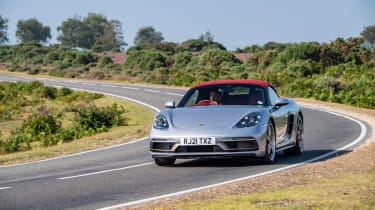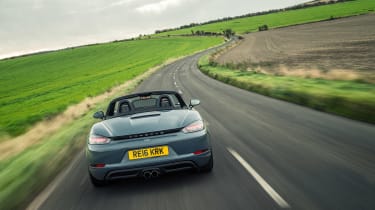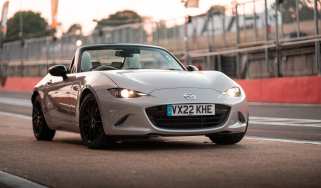Porsche 718 Boxster review – ride and handling
Always a strong point for the Boxster, the new 718 builds on the excellent foundations of the previous generations
This is where the Boxster’s best attributes still lie, as while the flat-four really is a bit disappointing, the world-leading chassis is still there. Technically speaking, the introduction of the 718 was a significant update of the previous 981, rather than an all-new model making its underlying architecture and body now 12 years old. The 718 update of 2016 brought through an array of welcome improvements, though, helping it retain its position as the most sorted handling sports car in the class. Driven hard, the Boxster's exceptional balance comes to the fore, allowing you to guide the car almost telepathically through complex sections of road with supreme confidence.
The EPAS system only continues to get better over time, to a point that it now delivers linear, natural responses without any kickback or undesirable white noise. It's accurate too – even if it does lose some clarity compared to the hard-top Cayman – unlocking a window into the inner workings of what is going on underneath you like the best steering systems do. Models fitted with standard passive dampers have a slight edge taken off the ultimate body control, but when fitted with the adaptive PASM option, or the optional passive lowered sports suspension, the Boxster feels locked down, fluid and precise in the firmest of the two damper settings.
The real magic only reveals itself when you push through that innate security of total composure and start leaning on it. Unlike the latest crop of 911s, you don’t have to be going at irrational speeds to revel in the car’s stunning clarity. It’ll push at the front if you’re clumsy on turn-in, but adjust your driving style and the Boxster will respond in an intuitive and involving manner. The responsive flat-six engine allows for accurate mid-corner adjustments, and you can gently over-speed the rear wheels with fantastic precision when exiting corners.
It’s here that the four-cylinder models begin to dim, as the laggy powertrains starts to get in the way of that satisfying flow when you’re totally engrossed in a fast drive. Thinking about turbo lag, when the power will come, how far before the apex you'll need to get on the throttle to get the most from the engine on exit – it’s obstructive and frustrating.
In the GTS you can take more liberties with the chassis – more than you would have thought considering its mid-engined layout – and the Boxster always feels wonderfully intuitive. It remains one of the most absorbing and interactive experiences in the business.
The various suspension and chassis options can make subtle differences to the way the Boxster drives on the road, but the sheer competence of the basic car always shines through. Porsche’s typically superb brakes also play a role, with a progressive pedal travel and a perfectly judged ABS system giving you the ability to really lean on them.





